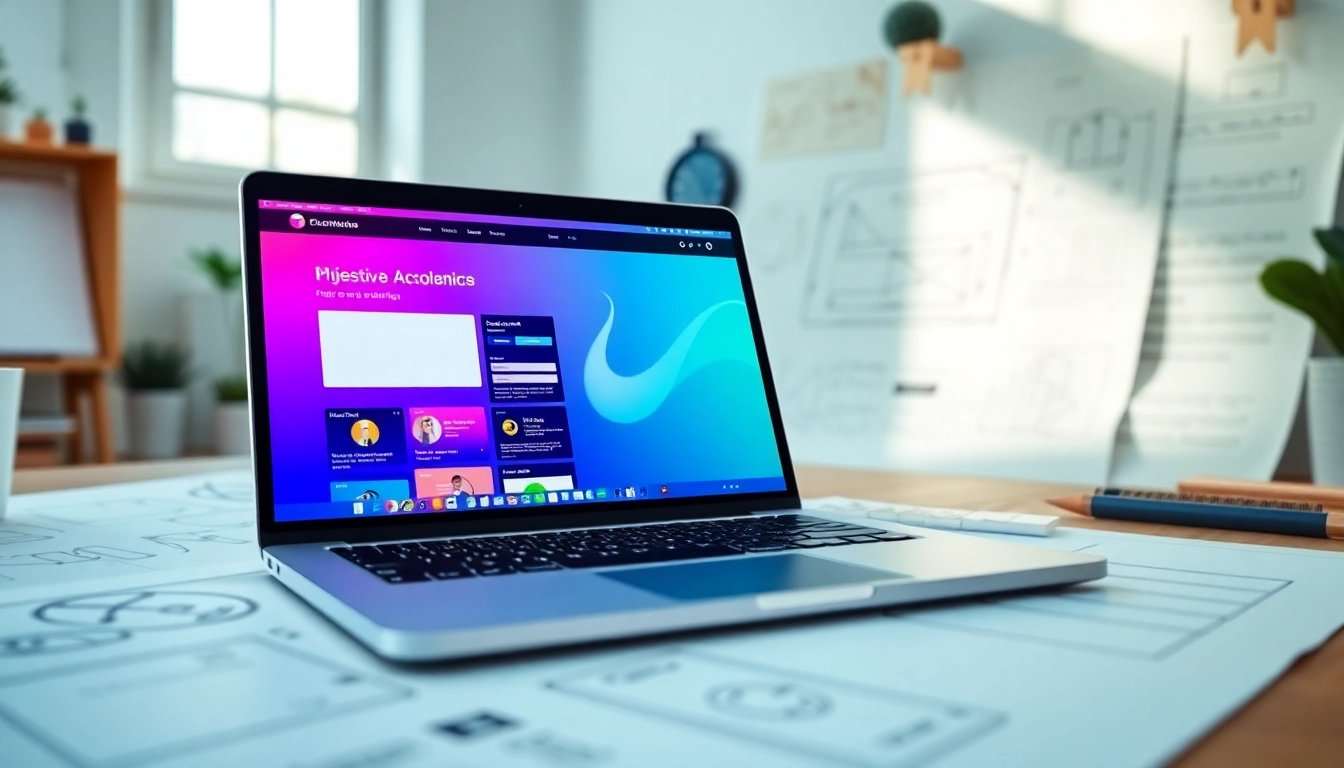Introduction to Website Design
In today’s digital landscape, effective website design plays a crucial role in establishing a brand’s online presence. A well-designed website serves as a virtual storefront, a platform for sharing information, and an avenue for customer engagement. As more businesses and individuals recognize the need to create a robust online identity, understanding the intricacies of website design becomes increasingly essential.
Understanding the Importance of Website Design
Website design is far more than just aesthetics; it influences user experience, search engine optimization (SEO), and conversion rates. A well-structured site helps guide users effortlessly through content, leading them to take desired actions, such as making a purchase or requesting information. As research indicates, users often judge a website’s credibility based on its design within milliseconds, underscoring the need for engaging visuals and intuitive navigation.
Key Principles of Effective Website Design
To create an impactful website, several key principles must be adhered to:
- Simplicity: Keeping the design clean helps communicate the brand message clearly.
- Consistency: A uniform look ensures that elements such as colors, fonts, and layouts are coherent throughout the site.
- Navigation: Intuitive navigation allows users to find information quickly, improving their overall experience.
- Accessibility: Designing with accessibility in mind ensures that all users, including those with disabilities, can interact with the site effectively.
Exploring Various Website Design Styles
Website design can take many forms, tailored to different audiences and types of content. Common design styles include:
- Minimalistic: Focuses on simplicity, using fewer elements to create a clearer message.
- Grid-Based: Utilizes a grid layout to organize content systematically, offering a structured appearance.
- Single Page: Presents all necessary content on one page, optimized for ease of scrolling.
- Responsive Design: Ensures the website looks good on any device, from desktops to smartphones.
Elements of Effective Website Design
Visual Hierarchy and Layout in Website Design
Visual hierarchy is essential for guiding users’ attention to the most critical elements on a page. By strategically employing size, color, and placement, designers can emphasize calls to action, headlines, and key content. Effective layout techniques include using whitespace judiciously and employing alignment to ensure elements are visually appealing and organized.
Typography and Color Schemes for Website Design
Typography and color are foundational aspects of visual branding. Consistent font choices that reflect the brand’s personality can enhance readability and user engagement. Likewise, a cohesive color palette not only reinforces brand identity but can also evoke emotional responses. Tools like color theory and typography pairing can assist designers in creating harmonious visual experiences.
Responsive Design: Adapting to Devices
With the growing prevalence of mobile internet usage, having a responsive design is no longer an option—it’s a necessity. Responsive design adapts to various screen sizes, ensuring that users receive an optimal viewing experience regardless of their device. Techniques such as fluid grids and flexible images are pivotal in achieving this adaptability.
Tools and Resources for Website Design
Design Software Options for Website Design
Numerous tools are available to assist designers in creating websites. Popular options include graphic design software like Adobe Photoshop and Figma, which allow for detailed mockups, and prototyping tools like InVision that facilitate collaborative feedback. For code-based design, platforms like Visual Studio Code are robust solutions, supporting various programming languages.
Utilizing Templates for Quick Website Design
Templates can serve as a time-saving resource for designers, offering pre-built layouts that maintain aesthetic appeal. Many platforms provide customizable templates that accommodate various specialties—from e-commerce to portfolio sites—all allowing for some customization to align with brand identity.
Incorporating User Feedback in Website Design
Gathering and analyzing user feedback is vital for continuous improvement. Tools like user surveys, heatmaps, and A/B testing can provide insights into user behavior, highlighting which areas of the design are effective and which require refinement. Establishing feedback loops helps keep the design relevant and user-friendly.
Common Challenges in Website Design
Balancing Aesthetics with Functionality
Finding the right balance between aesthetics and functionality can be challenging. While a visually appealing site attracts users, it must also be functional. To achieve this balance, designers are encouraged to prioritize usability in their aesthetic choices and consistently test designs with real users.
Navigating Accessibility in Website Design
Accessibility in website design ensures that all users, including those with disabilities, can navigate effectively. Compliance with standards such as the Web Content Accessibility Guidelines (WCAG) helps safeguard against potential legal issues while expanding the audience base. Strategies include alternative text for images, captioning for videos, and ensuring color contrast ratios are sufficient for readability.
Strategies to Overcome Design Pitfalls
Common pitfalls in web design include excessive clutter, slow loading times, and poor navigation structure. To mitigate these issues, designers should continually evaluate the site’s performance, seek feedback from users, and refine elements based on data-driven insights. Conducting regular assessments ensures that the website remains functional and engaging.
The Future of Website Design
Emerging Trends in Website Design
As technology evolves, so do design trends. Features such as micro-interactions, immersive experiences with augmented reality (AR), and dark mode options are becoming increasingly popular. Staying informed about these trends allows designers to implement contemporary practices that resonate with users.
The Role of AI in Website Design
Artificial Intelligence (AI) is shaping the future of website design by streamlining processes and improving user experiences. From chatbots providing real-time assistance to AI-driven design tools that conserve time, the integration of AI can further enhance the design workflow and user engagement drastically.
Preparing for Future Changes in Website Design
Designers must remain adaptable to future changes in web technology, user preferences, and accessibility standards. Continuous learning, staying attuned to industry advancements, and actively seeking feedback will empower designers to create relevant, user-focused websites. By fostering an agile mindset, professionals in the field can ensure they remain at the forefront of website design innovation.



